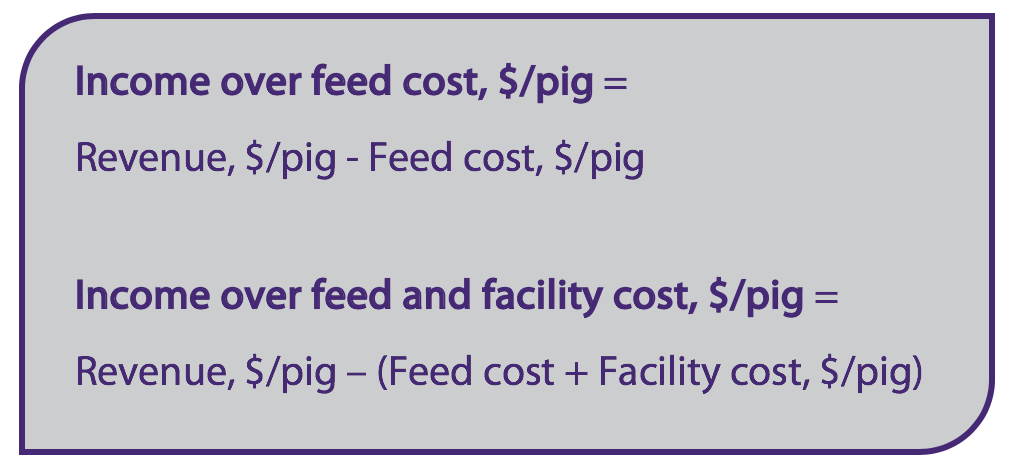Economics of a nutritional program
Determining the economic value of a nutritional program is a different process for each production system. There are three potential methods for determining the economics of a nutritional program: feed cost, feed cost per unit of gain, and income over feed cost.
Feed cost
Feed cost only takes into consideration the cost of the diets for comparison between one nutritional program versus another. This method is the simplest and has its greatest and best application when there is no expected change in pig performance associated with nutritional program. However, because changes in ingredients or nutrient levels often change pig performance, it should rarely be used as the main evaluation of economic competitiveness of a feeding program.
Feed cost per unit of gain
Feed cost per pound of gain is calculated by multiplying feed efficiency by the feed cost per pound. The best application of this method is for comparison between nutritional programs when there is an expected change in feed efficiency without a change in growth rate.

Income over feed cost
Income over feed cost (IOFC) is a margin of profit calculated by subtracting feed cost from the revenue, usually on a per pig basis. Revenue per pig is often estimated by multiplying hot carcass weight by hot carcass weight price, or by multiplying total weight gain by live weight price. Feed cost per pig is estimated by multiplying total feed intake by feed cost. Facility cost can be also added to feed cost to estimate the income over feed and facility cost (IOFFC). Typically, facility cost in the United States is around $0.10 to 0.12 per pig per day.
IOFC and IOFFC are accurate methods to determine the economic value of a nutritional program. The best application is for systems that run on a fixed-time basis and for comparison between nutritional programs when there is an expected or possible change in both feed efficiency and growth rate.

